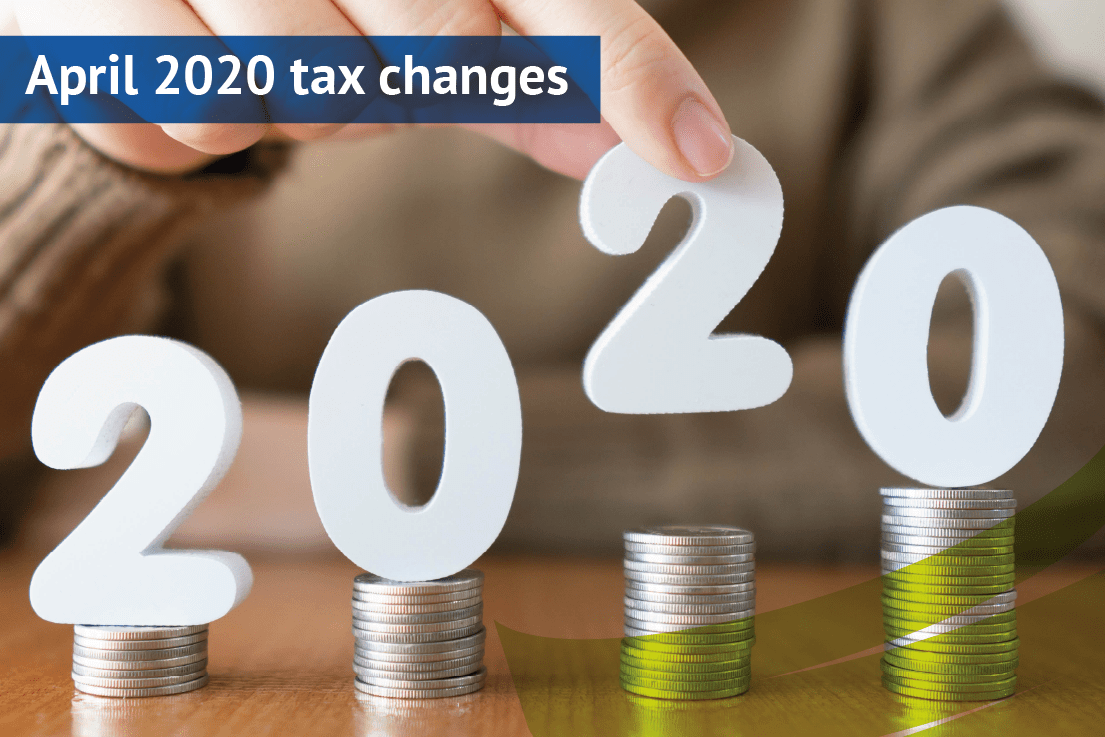April 2020 tax changes to be aware of
8th January 2020
It may only be January but the start of the new tax year is fast approaching! This year HMRC is introducing several new rules and policy updates so it’s a good idea to get up to speed on the April 2020 tax changes early to make sure you’re ready for the 2020/21 financial year. 
Changes to IR35
IR35 legislation determines whether workers can be classed as employed or self-employed – which is important for deciding how they need to be paid and whether employers need to pay National Insurance contributions (NICs) and provide employee benefits such as holiday and sick pay. From April 2020, it’ll be up to businesses to determine the employment status of any contractors they employ (currently the responsibility lies with the worker).
It’s a confusing piece of policy and we’ve written an in-depth guide to help you understand the changes in more detail.
Inheritance Tax (IHT) thresholds
Although the current inheritance tax (IHT) threshold of £325,000 will remain unchanged for the 2020/21 tax year, the ‘residence nil rate band’ (RNRB), which has been gradually phased in since 2017, will reach its final level of £175,000. This means that the total IHT allowance of £500,000 (or £1million for couples) when parents or grandparents pass on their main residence to direct descendants (classed as children, step-children and grandchildren).
To qualify for the extra allowance, the property must have been a main residence at some point, so you can’t use it on properties which were buy-to-let and never lived in by the owner.
April 2020 tax changes for landlords
HMRC has been gradually phasing out tax relief which was previously in place for buy-to-let landlords and this will come into full force from April 2020. Previously, landlords could claim back tax on finance costs such mortgage interest expenses, however this will be fully phased out for the new tax year. Instead, landlords will be able to claim a new 20% tax credit.
HMRC estimates that 82% of landlords won’t end up paying any more tax as a result of the change, however those in higher tax bands will be affected. It’s also important to note that changes to the way mortgage income is reported via Self Assessment could push landlords into a higher tax band, so it’s worth double checking your tax allowance to make sure.
Landlords may also be affected by the introduction of principal private residence (PPR) relief. Currently, if you purchase and move into a new property before selling your old one (provided it has been your main residence), there is an 18-month grace period before you are subject to capital gains tax. In addition to this, there is a ‘lettings relief’ which allows taxpayers who are letting out their old property capital gains relief of up to £40,000, provided it qualifies for PPR relief. However, under the new rules PPR is being reduced to nine months, while lettings relief will only apply where the landlord is sharing the residence with the tenant.
It’s important to note that the new PPR relief rules apply to all lettings – regardless of whether they start prior to April 2020.
Capital Gains Tax payment terms
In addition to the new PPR relief legislation discussed above, HMRC is also making changes to the timeframe in which capital gains tax (CGT) must be paid. Under the current rules, taxpayers must report any capital gains on their Self-Assessment tax return and have until January 31 following the year in which the gain was made to make payment. However, from April 2020, taxpayers will only have 30 days to make payment before being subject to penalties. Read our guide to the changes to CGT.
April 2020 tax and National Insurance changes
Changes to employment allowance also come into force from April. Under the employment allowance scheme, eligible companies are able to claim up to £3,000 relief on their National Insurance contributions (NICs). The scheme was designed to help small businesses and encourage them to employ more staff, however currently it is available to all eligible companies who pay Class 1 Employers’ National Insurance. From April, it will only be available to businesses that had NICs bills of under £100,000 in the previous tax year. HMRC estimates up to 100,000 businesses will be affected by the change – read our guide on the new rules for more information.
It’s also expected that the National Insurance threshold will rise to £9,500, with a long-term plan to eventually increase it to sit in line with the current income tax threshold of £12,500. This policy has not been officially announced yet, however it was outlined in the Conservative manifesto and chancellor Sajid Javid is expected to announce it in his budget on 11th March (the budget was originally due to take place on December 12th but was delayed due to the general election).
Talk to the experts
Our expert team is on hand to answer any questions you have about how the April 2020 tax changes could affect you or your business. Contact us for further support.
Information correct as of publication date 1st January 2019. Please note information may change following the budget announcement in March.




